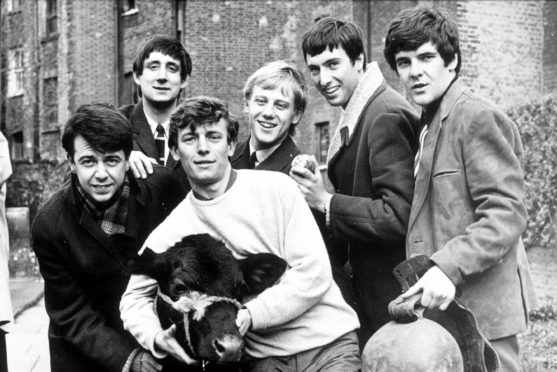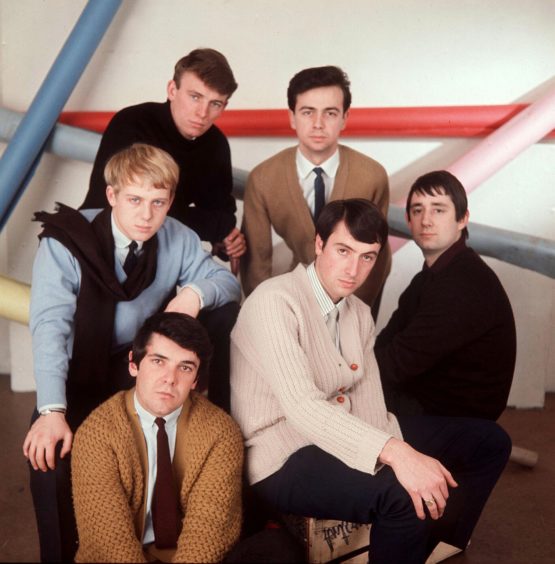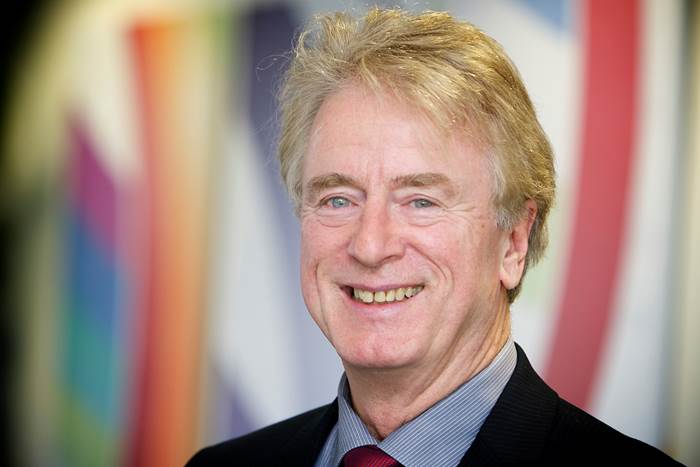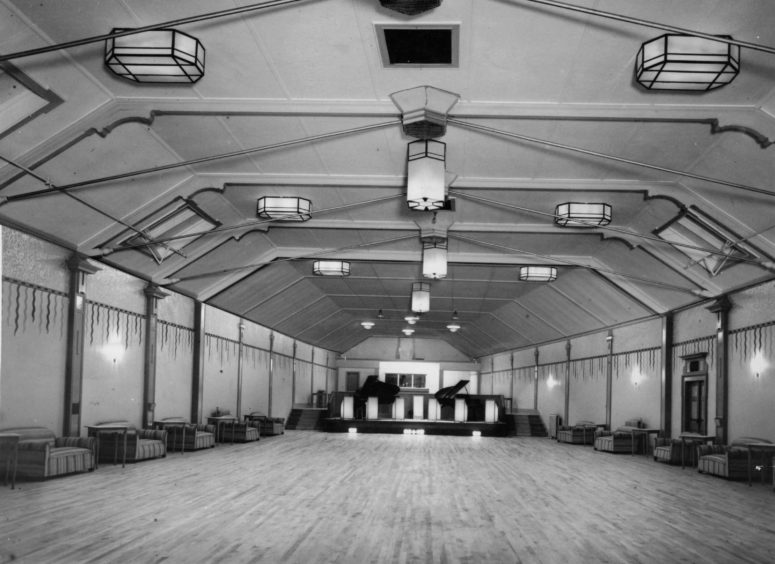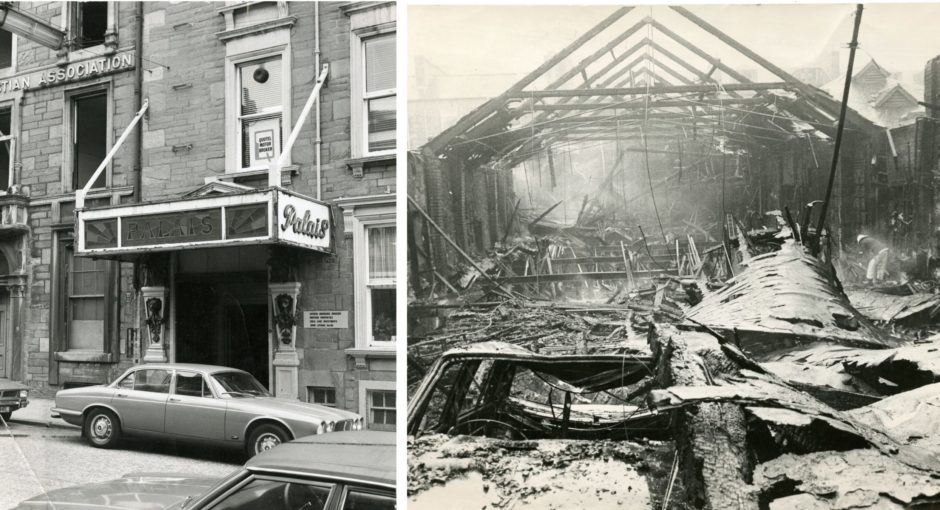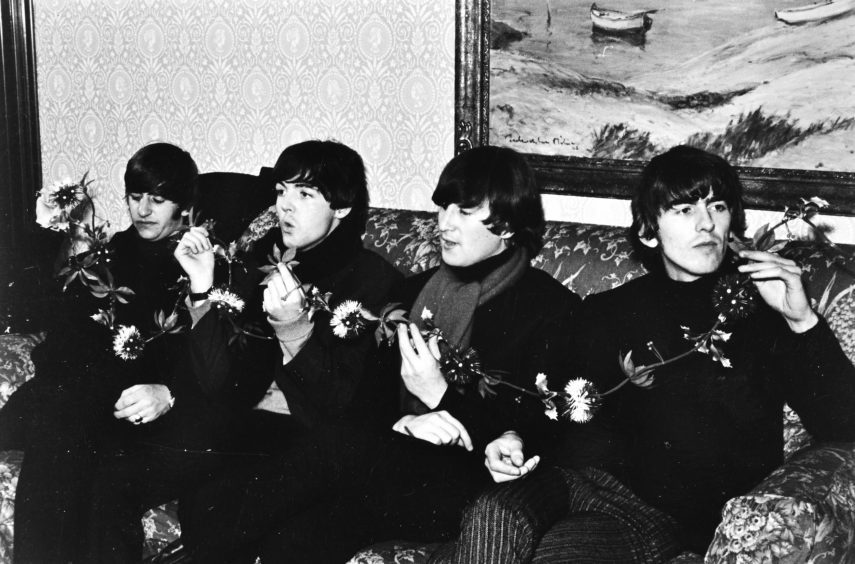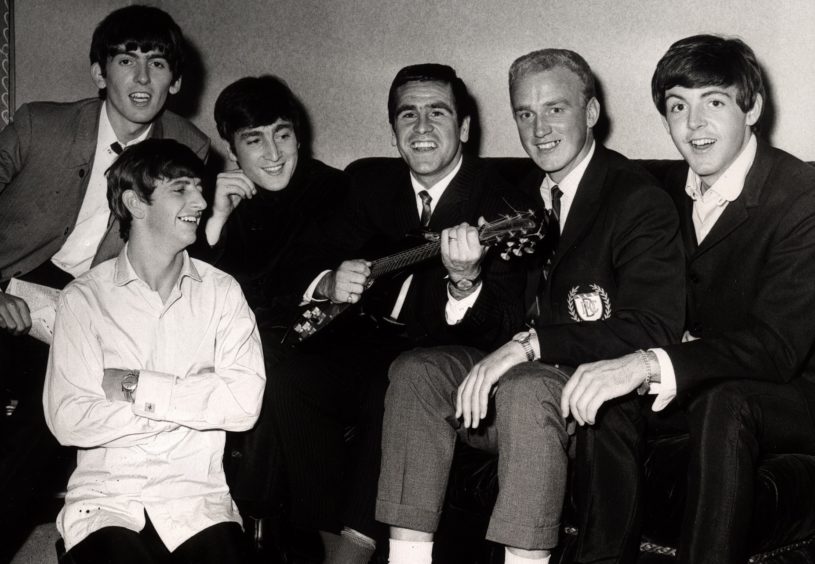They were the chart-topping 1960s pop heroes who stopped off to buy a Highland cow before a Dundee gig.
Andi Lothian admits it was one of the strangest moments during his time as an agent and promoter in the 1960s.
Mr Lothian, who worked with The Beatles, Jimi Hendrix, David Bowie, Eric Clapton and many others, recalled the time he brought Unit 4+2 to perform at the Top Ten Club in the Palais ballroom, Tay Street, on their first Scottish tour, 55 years ago.
The Top Ten Club regularly hosted stars such as Bowie and the Bee Gees.
Unit 4+2’s song ‘Concrete and Clay’ became a big hit in 1965 and reached the top of the UK singles chart the week that Mr Lothian brought them to Scotland.
Mr Lothian told how he was driving along with them when they spied a Highland cow calf.
The band were so smitten that they got him to pull up the car and asked the farmer if they could buy the calf.
They gave the man £50 and then shipped the calf by train down to London.
The incident provided much amusement to all those involved and the daily papers at the time.
Mr Lothian recalled: “It was all very impromptu as I remember it.
“One minute I was driving Unit 4+2 to Dundee’s Palais as the band enjoyed the Scottish scenery.
“The boys suddenly wanted to get close to a calf mulching at the roadside.
“Out they poured from the vehicle and one of the band attracted the attention of the bemused farmer, jokingly offering to buy the calf.
“The farmer accepted the offer for real, and the poor calf was shipped south a few days later.”
In 1962, Brian Parker, then the guitar player and songwriter with The Hunters, decided to form his own vocal harmony group.
He asked his friend David ‘Buster’ Meikle to join him and they asked singer Tommy Moeller and Peter Moules, who were at school together, to join their group which they called Unit 4.
Unit 4 was later joined by Russ Ballard on guitar and Robert ‘Bob’ Henrit on drums forming the +2 for a six piece, four-part vocal harmony group.
Unit 4+2 released 10 singles on Decca between 1964 and 1967 and put out a further six singles on Fontana up to 1969 before disbanding in 1970.
Dundee was swept up in a dancing boom after the Palais opened in the 1920s and crowds streamed up South Tay Street for tea dances which went on from 3pm to 5.30pm.
Mr Lothian’s dad, violinist Andy Lothian Snr, brought his 12-piece orchestra to Dundee in 1938 and played there for 35 years until 1973.
In the 1960s some of the UK’s top pop stars and bands regularly appeared at the venue which became known as ‘Dundee’s top pop spot’ following the opening of the Top Ten Club.
Mr Lothian founded the Top Ten Club in 1962 and it soon garnered a reputation as the place to see top chart stars.
Although the Palais continued into the 1970’s, the Top Ten Club could not bring dancers away from Sunday night colour TV and closed.
After closing its doors, the Palais became Samantha’s, then Bloomers, before burning to the ground in 1980.
Fab Four for £40 a night
Mr Lothian was the man who brought a relatively-unknown pop group called The Beatles to Scotland for a mere £40 a night.
He was a double bass player in a Dundee jazz band at the time, but also worked as a booking agent.
He used to book jazz bands for dances, but a lot of ballrooms were growing interested in guitar music.
Mr Lothian wasn’t happy that guitar music was overtaking jazz in the popularity stakes but things changed when he listened to Radio Luxembourg.
Mr Lothian heard The Beatles’ first hit, Love Me Do, and was utterly blown away and said he knew he had to book them for a tour.
So at the beginning of January, 1963, Paul McCartney, John Lennon, George Harrison and Ringo Starr headed north dressed in their distinctive attire.
The Beatles played at dances in an unusual mixture of venues at Elgin, Aberdeen, Dingwall and Bridge of Allan.
Incredibly, not one was a sell-out with turn-outs ranging from 50 to 200, with the punters being far from appreciative.
One night they played the Museum Hall in Bridge of Allan where the crowd consisted mainly of rather inebriated young male farmers.
There were punch-ups in every corner, people were talking over the music and coins were flung on stage – including one which hit Paul McCartney’s guitar.
Mr Lothian admired The Beatles’ nerve in continuing their set and boarded a plane for London to meet The Beatles’ manager, Brian Epstein, and begged to have the band again, despite having lost money on the tour.
Epstein agreed, but on the proviso that it wasn’t for dances, but concerts.
This time it would be £500 rather than £40 a night and Mr Lothian was told to make a decision there and then.
He was positive the band was going to be huge and took a gamble.
He booked the band for gigs in Glasgow, Kirkcaldy and Dundee in October 1963 and the gamble paid off.
The sell-out concerts proved to be pandemonium with the high-pitched squeals of the girls almost drowning out the music.
Getting John, Paul, George and Ringo out of the Caird Hall in Dundee proved just as exciting as the concert.
To avoid being swamped by fans they had to go out a back door and scramble across a coal bunker to get to their car.
Mr Lothian turned to a reporter and said: “It’s Beatlemania”, and a week later the term had hit the Fleet Street press.
